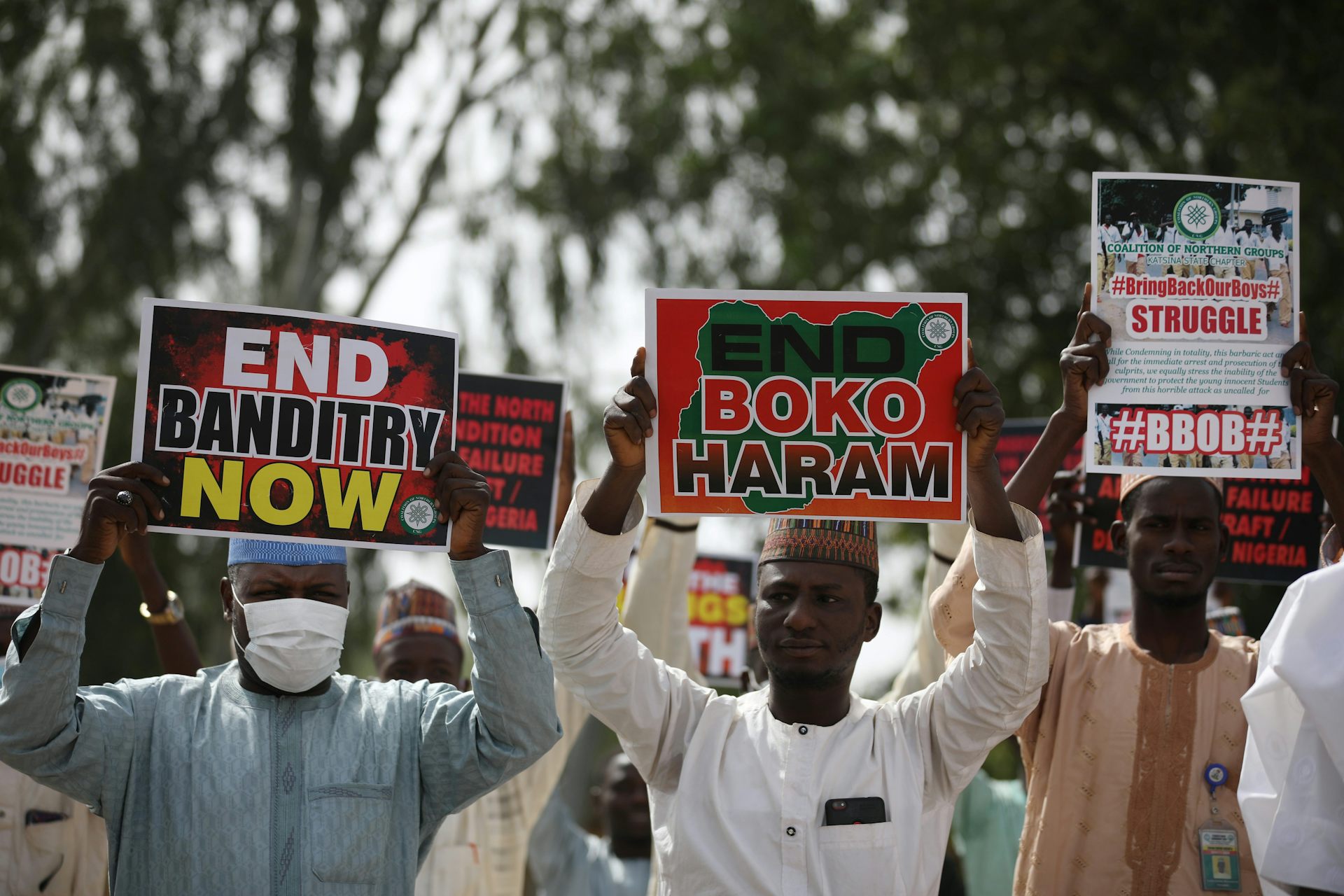
Due to growing insecurity, Nigeria is gradually becoming one of the most dangerous places to live. The 2020 Global Terrorism Index identified the country as the third most affected by terrorism. There was a sharp increase in Boko Haram’s targeting of civilians by 25%, and killings by herdsmen increased by 26%, compared with the previous year. The two countries higher on the index are Iraq and Afghanistan.
According to the Nigeria Security Tracker, 2,769 violent deaths were recorded between February 2020 and February 2021 in Borno State alone. Similarly, ransom-kidnapping by armed groups has increased substantially in the past five years. Over $18 million was paid as ransom for kidnapped victims between 2011 and 2020.
While insecurity is common in Nigeria, the northern region has been most affected. This is due to Boko Haram attacks, banditry, farmers-herdsmen conflicts, kidnappings and ethno-religious conflicts. Sadly, children have not been spared.
In the northeast, children have been murdered, abducted and used as sex slaves, forcefully recruited as child soldiers, and suffer from diseases and malnutrition at the Internally Displaced Persons camps. The United Nations says almost 4,000 children were killed in just a year, 2015 to 2016. UNICEF reported that an estimated 1.9 million people are displaced – and about 60% of them are children; many under the age of five.
The rising phenomenon has further manifested in the recent wave of attacks on schools and kidnapping of students.
My research published last year highlights why children have become targets for the armed groups in northern Nigeria. This paper focuses on children in the Boko Haram conflict, which has for over 10 years ravaged the northeastern part of Nigeria and around Lake Chad.
Despite the reality that children have increasingly become the face of insecurity in northern Nigeria, the literature has been silent on issues related to child security. My study therefore aimed to address the perspective of children in the conflict.
I found that children were of strategic interest to both the terrorists and the state security forces. I concluded that child security had not been given sufficient attention in Nigeria, and that child security should be included in peace-building efforts in northeastern Nigeria.
Children and conflict in northern Nigeria
The dimension of children in violent conflicts in northern Nigeria gained momentum in 2013 when Boko Haram adopted the strategy of direct attacks on schools, hospitals and centres for internally displaced people.
It started with the midnight raid of a dormitory in Gujba, Yobe State, leading to the murder of 44 schoolboys by the terrorist group in September 2013. Five months later, another boarding school was attacked, and 59 boys were murdered in the same state. In April 2014, 276 schoolgirls were abducted in Chibok in Borno State.
UNICEF in its 2018 report said that the group had kidnapped over 1,000 children since 2013. Between 2015 and 2016, the UN estimated that 3,909 children were killed.
In the past five years, the rise of banditry added a new and dangerous dimension to attacks on children. On December 11 2020, 333 students were kidnapped in Kankara, Katsina State. On December 20 2020, 80 students at an Islamic school were kidnapped in Mahuta, Katsina State. Twenty seven students were abducted in Kagara, Niger State, on February 17 2021.
The latest occurred on February 25 with the abduction of 317 schoolgirls in Jangebe, Talata-Mafara local government, Zamfara State.
Why children are prime targets
Our study used a qualitative approach, relying on data from institutional reports of intergovernmental agencies like the United Nations, United Nations Children’s Fund, and International Organisation for Migration; non-governmental agencies like Human Rights Watch, Amnesty International, Global Coalition to Protect Education from Attack, Mercy Corps, Open Doors and media reports.
The research showed that children were of strategic interest to the armed groups for many reasons. First, targeting children proved effective as a tool to negotiate for the release of members of the group in prison and receive huge ransoms to purchase weapons and fund their operations.
Second, the armed groups were interested in children to gain local and international attention to show their strength, seek international collaborations with similar groups, and amplify their demands on the state authorities.
Third, children were useful for their military operations, especially for terrorist groups. They could plant explosives, act as human shields or suicide bombers, and spy on the other parties because they didn’t arouse suspicion.
Fourth, the attack on schools corresponded with the central ideology driving terrorism in the region, which was based on opposition to Western education. The increased attacks showed the plan was to make the region insecure for teaching and learning.
Fifth, girls were of interest to the armed groups for sexual exploitation. Abducted girls were sometimes raped or forced into marriages in the camps.
Nigeria must safeguard its children more
Child security has not been given sufficient attention in Nigeria. This explains the successful attacks on children in recent times. Child security underscores the essence of the United Nations Convention on the Rights of Child, which Nigeria is a party to.
The government must show serious commitment to children’s security by tackling the rising problem of insecurity ravaging the country. The paper underscores the need for specialised programmes that can address the peculiar challenges of children involved in the conflict zones and not merely incorporate them into adult-focused or general programmes.
The international community, including important nongovernmental organisations promoting children’s rights and welfare, must also compel the authorities to secure the children and internationalise the problem of child insecurity in Nigeria.![]()
Hakeem Onapajo, Senior Lecturer in the Department of Political Science and International Relations, Nile University of Nigeria
This article is republished from The Conversation under a Creative Commons license.

